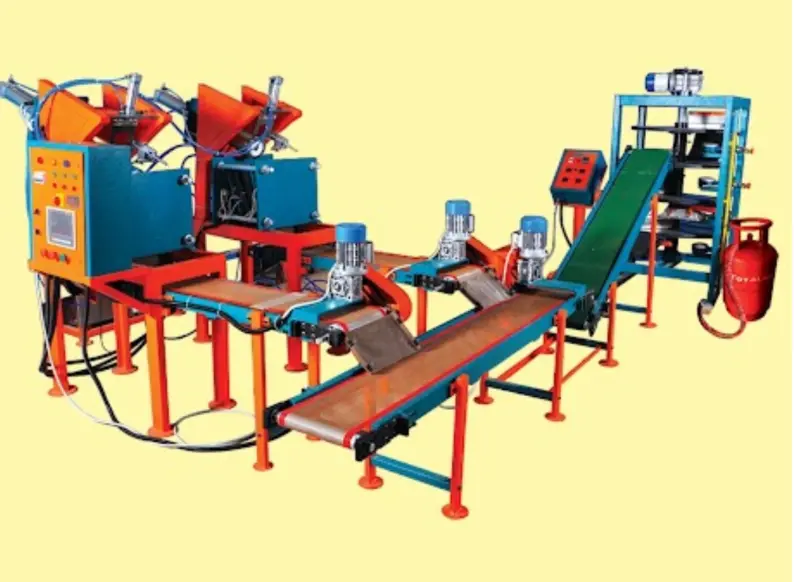
Learn How Automated Equipment is Changing The Food Industry
In a world full of technological innovations, the food business is seeing a huge change with the implementation of automated technology. Automation is changing the methods of food production, processing, and distribution from farm to table. It results in improved efficiency, higher quality, and lower costs. The merger of robotics and artificial intelligence with food production systems is at the forefront of this transition. These latest innovations improve precision, reduce human error, and ensure consistency in employment from product sorting to packaging.
Apart from speeding operations, automated equipment contributes significantly to food safety and sustainability, addressing essential elements of today's food industry. In this blog, let us look into the massive impact of automated equipment on the food sector by exploring the primary methods shaping the future and the potential benefits it brings to companies and customers.
Simplifying Manufacturing And Processing
Automation is changing the environment of food production and processing. Robots with sensors and AI can plant, water, and harvest crops in the agricultural sector. These machines run nonstop, ensuring consistent and detailed tasks that are difficult to do. As a result, yields grow, waste reductions decrease, and farming becomes more sustainable.Advancing along the food supply chain, automated processing factories have become a benchmark.
These facilities use modern machinery to sort, wash, package, and label products with the lowest human participation. It improves the hygiene and safety of the food, thereby increasing the efficiency of the process. Furthermore, automation enables real-time data monitoring, allowing quick adjustments to optimize output, reduce downtime, and maintain compliance with quality standards.
Improving Food Quality And Safety
Automated equipment is important for maintaining food safety and quality. Manufacturers detect impurities, flaws, or variations in real-time by combining sensors, cameras, and artificial intelligence. This ability to find problems at every stage of the manufacturing process keeps faulty goods from reaching consumers, protects public health, and promotes industry confidence.
Furthermore, automation encourages consistency in product quality. Automated solutions assure that each product meets strict standards by removing the differences generated by human factors. This level of consistency is essential in industries such as baking, where precise measures and uniformity are mandatory for consumer satisfaction.
Meeting Customer Needs
The food sector has had to adapt to changing consumer preferences and rising demand for personalization. Automated equipment provides the adaptability required to meet these changing customer demands. Fast-food restaurants are introducing computerized kiosks that allow customers to customize their meals. Automated systems can alter recipes, portion sizes, and packaging based on real-time data and customer feedback.
Increasing Efficiency And Reducing Costs
Automation achieves remarkable productivity by reducing dependence on manual work. This efficiency results in significant savings in expenses for enterprises. While the initial cost of automated equipment can be high, the long-term advantages outweigh the costs. Repetitive tasks need fewer human resources, lowering labor costs and increasing output.
The Role of Robotics And Artificial Intelligence
Robotics and artificial intelligence are at the forefront of the food industry's automation revolution. From agriculture planting and harvesting to packaging and distribution, robotics serves at all stages. Collaborative robots, or cobots, work with human employees to improve their capabilities and make the workplace safer. AI drives data analytics and decision-making. Machine learning algorithms can forecast consumer preferences, optimize supply chain logistics, and even regulate inventory levels. AI-powered quality control systems can detect flaws or variations that human inspections might not notice.
Managing Challenges
While the integration of automated equipment provides significant benefits, it also poses problems that the sector must overcome. Workforce displacement is a worry, as automation may render certain traditional occupations ineffective. Retraining and internship programs that prepare employees for tasks requiring human creativity, critical thinking, and problem-solving abilities can reduce it.
Furthermore, there are concerns about the initial funds necessary for implementing automated systems, particularly for small and medium-sized businesses. The sector must develop ways to make this technology more accessible through collaborations, grants, or financial alternatives.
JJ Hi-Tech: Leading a Modern Revolution in the Food Industry
JJ Hi-Tech, a high-tech automation and machinery company in Coimbatore, is leading the way in revolutionizing the food industry. Their innovative equipment, including chapati, parotta, and idiyappam-making machines, simplifies manufacturing, improves food safety, and meets client requests while lowering costs.
Despite the challenges, the potential benefits for businesses, consumers, and the environment are considerable. As the industry embraces automation, it is important to strike a balance between technological innovation and maintaining skilled employees. JJ Hi-Tech is reshaping food production, processing, and consumption with automation, transforming the future of food and making it more efficient, safer, and pleasant for everyone involved.
